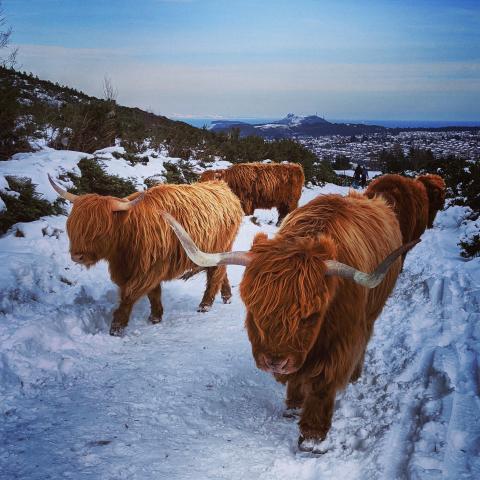Assessing diagnostic tests for Johne's disease in the absence of a gold standard
Diagnostic tests for disease are not perfect: they sometimes indicate that a disease is present when it isn't and sometimes that there is no disease, when there is an infection. In addition, an animal may test positive for a disease which, although typically persistent in an animal, may be subsequently cleared by an animal’s immune response.
Cattle paratuberculosis (pTB), also known as Johne's disease, is notoriously difficult to test for. There is no “Gold Standard” test that can reliably detect presence or confirm absence of this disease. Using the tests available an animal may be positive at one time and negative at another. In turn, this makes it difficult to assess the utility of new tests. In collaboration with Scientists at Moredun, BioSS staff used complex statistical models to assess a set of proposed new tests for pTB without having to make the unrealistic assumption that some of the data collected could be treated as a ‘Gold Standard’.
Paratuberculosis is a slowly progressing infectious disease of cattle, caused by the bacterium Mycobacterium avium subspecies paratuberculosis. Infection is believed to occur early in life and infected animals shed the bacterium intermittently throughout their life. Ultimately, some infected animals will show clinical signs such as wasting and diarrhoea. MRI scientists wished to investigate whether any of a panel of antigens, when employed as a stimulant in an Interferon Gamma Response Assay (IGRA) could be used to detect pTB in cattle. This test was designed to detect early-stage infections, ahead of the classical diagnostic tests.
Two herds of cattle were available. The first herd, from which only a single sample from each animal was tested, was deemed to be negative as regular testing had been carried out, and no positive tests, or clinical signs of pTB, had ever been seen. The second herd, from which annual samples over a five-year period had been tested, had a known pTB problem. Thus, all animals from the first herd were assumed to be negative, whereas animals from the second herd were of unknown status, although each animal was designated to be either consistently positive or negative. This reasonable assumption was based on our current understanding of the disease, that infection occurs early in life and that once infected, the animal cannot clear the bacterium to sterility.
We fitted an appropriate statistical distribution to the data from known negative animals. Assays from animals in the herd of unknown status showed marked within-animal variability, such that many values from animals in the herd which probably had the disease were similar to values from the negative herd. The traditional, simplistic method of applying a threshold based on the 95th percentile of the negative animals was therefore not appropriate.

Instead, BioSS staff used a statistical model that assumes that IGRA results from positive animals come from an unknown distribution, similar to the distribution of negative animals, but with a larger mean value. This is a minimal, and not unreasonable, assumption, but allows the model to infer the true status of each animal stochastically from the multiple repeat tests carried out on each individual animal. It is important to note that, given this model, the observation of a low assay result on one test is not strong evidence for the animal being, in truth, uninfected.
By repeatedly simulating the true status of each animal (based on the test results), and conditioning on these simulated ‘true’ positive or negative results, we can use standard methods on each simulated replicate to establish the likely characteristics of the test in question. Using this approach, it was demonstrated that although none of the proposed antigens constituted a good test, some were worthy of further investigation, and that basing diagnosis on use of two consecutive tests resulted in appreciably improved performance.
This work was done in collaboration with Scientists at the Moredun Research Institute and was funded under the Scottish Government's Strategic Research Programme for environment, agriculture and food.
